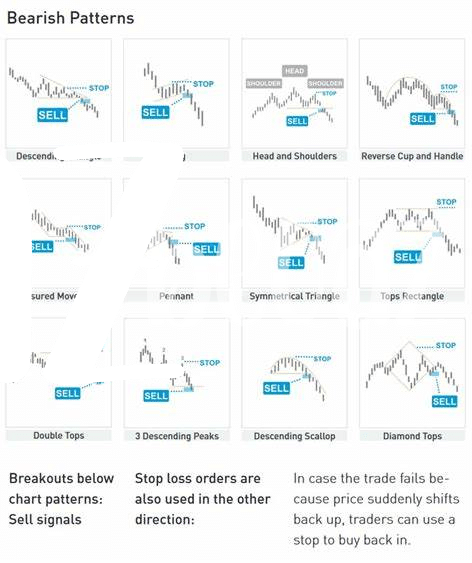What Exactly Are Moving Averages? 🤔

Imagine you’re on a road trip, driving through the ever-changing landscape of hills and valleys. Just as you use your GPS to navigate and anticipate the road ahead, traders use a handy tool called moving averages to understand and predict the journey of Bitcoin’s price. It’s like drawing a smooth line through the sometimes chaotic ups and downs of Bitcoin’s price chart, giving traders a clearer view of where things might be headed.
Moving averages help by averaging out Bitcoin’s price over a specific period — think of it as taking all the daily price points over a certain time, say 30 days, and calculating their average to plot a single point. This process is then repeated each day, creating a flowing line that traders watch closely. Here’s a simple breakdown:
| Time Span | Description |
|---|---|
| Short-Term | Highlights recent price movements, more sensitive to daily changes. |
| Medium-Term | Offers a balance, smoothing out short-term volatility. |
| Long-Term | Provides a broader view, indicating long-standing trends. |
This smoothed line helps traders cut through the noise, highlighting whether Bitcoin’s price trend is moving up or down, and thus, making it a bit easier to predict future movements.
Why Moving Averages Matter in Bitcoin Trading 📈
In the dynamic world of Bitcoin trading, understanding the ebb and flow of market trends is like having a superpower. Imagine moving averages as your magic wand, enabling you to clear the fog on the crystal ball, revealing whether Bitcoin’s price is on a roller coaster heading up or taking a slide down. This seemingly simple tool, when wielded with knowledge, can transform raw data into a readable story, highlighting the momentum and giving traders insights into when it might be the right time to buy or sell.
Now, you might wonder why these moving averages have such clout in the Bitcoin realm. Well, in a market that never sleeps, where prices can swing wildly in the blink of an eye, having a reliable sidekick can make all the difference. Moving averages smooth out price data over a specific period, offering a glimpse into the underlying trends free from the noise of daily fluctuations. This clarity is not just about seeing where the price has been; it’s a beacon illuminating the path forward. Intriguingly, this concept links well with understanding the broader impacts of Bitcoin in the financial world, such as enhancing cross-border payments, a topic explored in depth at https://wikicrypto.news/the-speed-of-bitcoin-transforming-cross-border-payments.
Choosing Your Moving Average: Simple Vs. Exponential 🔄

When stepping into the world of Bitcoin trading, it’s like picking the right tools for a treasure hunt. Imagine having two maps: one is straightforward but a bit rough around the edges, showing you the general direction (this is your simple moving average, or SMA). It adds up the closing prices of Bitcoin over a set period and divides them by the number of prices used, giving you a smooth line that tracks the trend. On the flip side, your second map is more like a high-tech GPS, adapting to how fast you’re moving (meet the exponential moving average, or EMA). This one cares more about what happened recently, giving recent prices more weight than older ones. Deciding between these maps isn’t just eeny, meeny, miny, moe; it’s about how quickly you want to react to Bitcoin’s price dance. Do you prefer a steady guide or a quick responder to sudden changes? 🗺️💡 Whichever you choose, it sets you on your path through the choppy waters of Bitcoin trading.
Spotting the Trend: Bullish or Bearish? 🐂🐻

In the world of Bitcoin trading, understanding whether the market is feeling optimistic (bullish 🐂) or a bit pessimistic (bearish 🐻) can feel like decoding a secret message. But, with moving averages, we get a pretty nifty decoder ring. Imagine you’re watching a line chart that represents the price of Bitcoin over time. If this line starts moving upwards, it’s like the market is telling us, “Hey, things are looking up! 📈” That’s a bullish trend, suggesting that prices might continue to rise because people are feeling confident. On the flip side, when the line trends downwards, it’s as if the market is a bit gloomy, murmuring, “I’m not feeling too hot 📉.” This bearish hint means prices might drop further, as confidence is lower. Identifying these trends early helps traders decide when to jump in and ride the wave or buckle up for a potential downturn. Now, speaking of making smart decisions, also consider optimizing bitcoin payment channels for small transactions explained, which offers insightful tips for those looking into Bitcoin payment solutions. By combining these insights with a keen eye on moving averages, you’re better equipped to make informed trading decisions, whether the Bitcoin sea is calm or stormy.
Golden Cross Vs. Death Cross: Key Signals 💡
Imagine two ships signaling in the vast ocean of Bitcoin trading, one brings the promise of sunny days, and the other forewarns of storms ahead. These are not real ships, of course, but powerful cues known as the Golden Cross and the Death Cross. The Golden Cross happens when the short-term moving average, like a quick and lively dolphin, leaps over the slower, long-term moving average. This magical moment is often seen as the dawn of a bullish (upward) market trend, hinting it might be a good time to set sail with an investment. On the flip side, the Death Cross, with a name as ominous as a cloudy night, occurs when the short-term moving average dips below the long-term one, suggesting a bearish (downward) trend on the horizon. It’s a signal that stormy weather might be ahead, and caution is advised.
| Signal | Description | Implication |
|---|---|---|
| Golden Cross | Short-term moving average crosses above long-term moving average. | Potential start of a bullish market trend. |
| Death Cross | Short-term moving average crosses below long-term moving average. | Potential start of a bearish market trend. |
Navigating through these signals requires keen observation and a bit of wisdom. While they offer valuable insights, remember the sea of Bitcoin trading is forever changing, and these signals are just one of the many tools in a trader’s compass. Use them wisely, mixing them with other indicators and personal judgment to make the best decisions in your trading adventure.
Practical Tips for Applying Moving Averages 🛠️

When diving into the world of Bitcoin trading, knowing how to apply moving averages can be a real game-changer. Start by choosing a particular time frame that matches your trading strategy; it could be days, weeks, or even months. It’s like picking the best pair of glasses that helps you see the market movements clearly. Now, imagine you’re painting a picture of the market. Your moving averages can act like broad brush strokes, revealing the bigger trend. When the market seems to be climbing uphill, consider this a friendly market wave you might want to ride. On the flip side, if things are looking downhill, it might be time to hold tight or step back. Remember, it’s not just about the highs and lows – it’s the overall direction that’s your treasure map.
Incorporating these techniques into your strategy can become a powerful tool in your trading toolbox. For those looking to expand their understanding of Bitcoin’s potential, particularly in the realm of global transactions, integrating bitcoin payment gateways into online platforms explained offers invaluable insights. This guide illuminates the pathway for merchants and traders alike, showcasing the intricacies of integrating Bitcoin into your business or investment strategy. As you refine your approach with moving averages, remember, practice makes perfect. Set up a sandbox for yourself, play around with historical data, and watch how these averages behave in different market conditions. You’ll soon find yourself making more informed decisions, surfing through the waves of market trends with greater confidence and precision. 📊🚀
